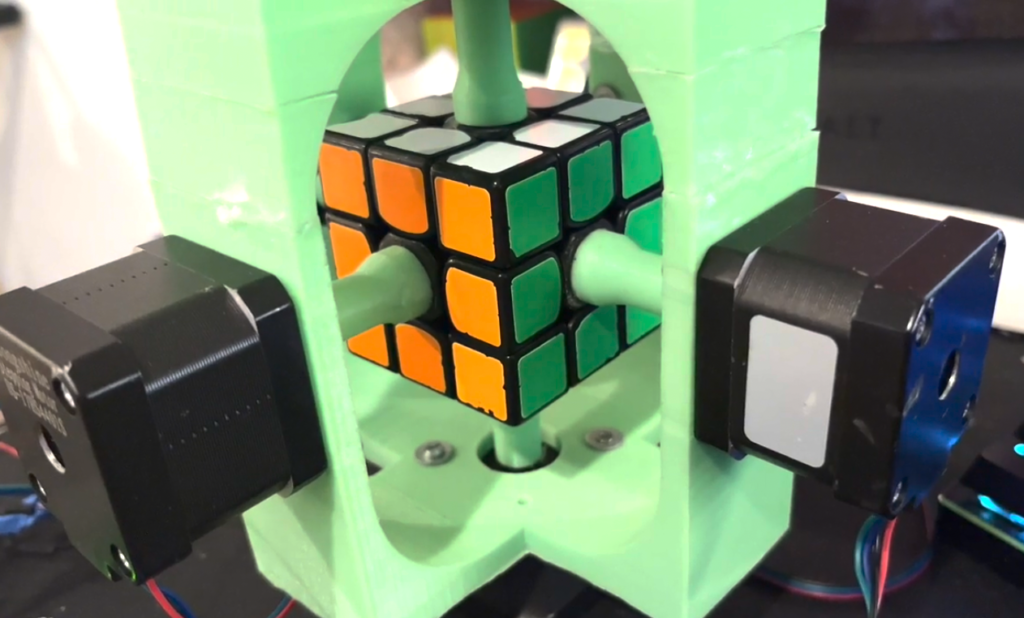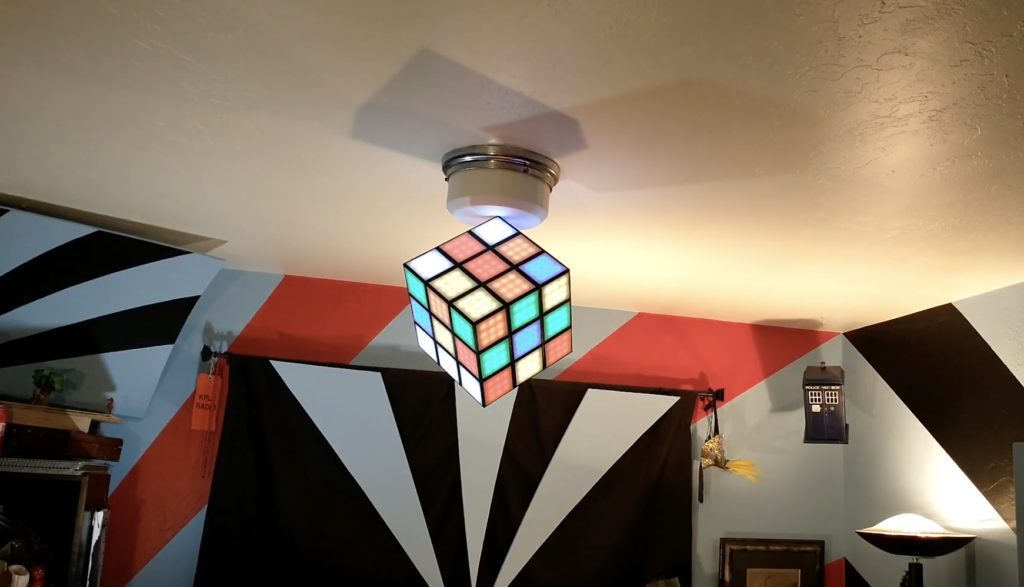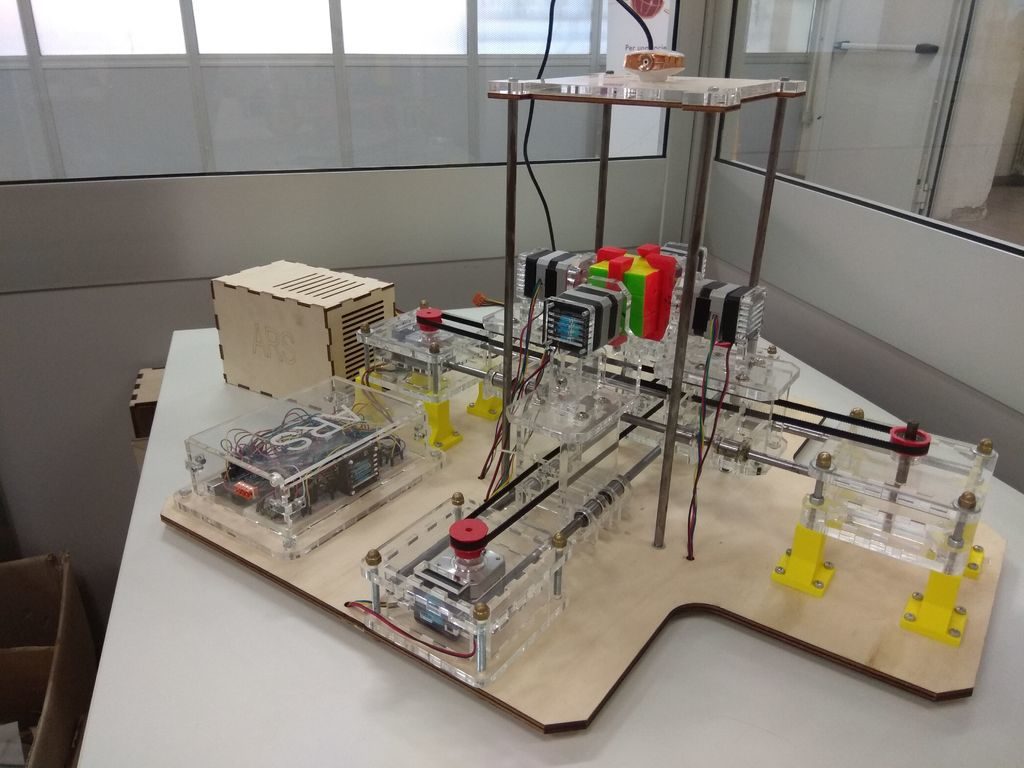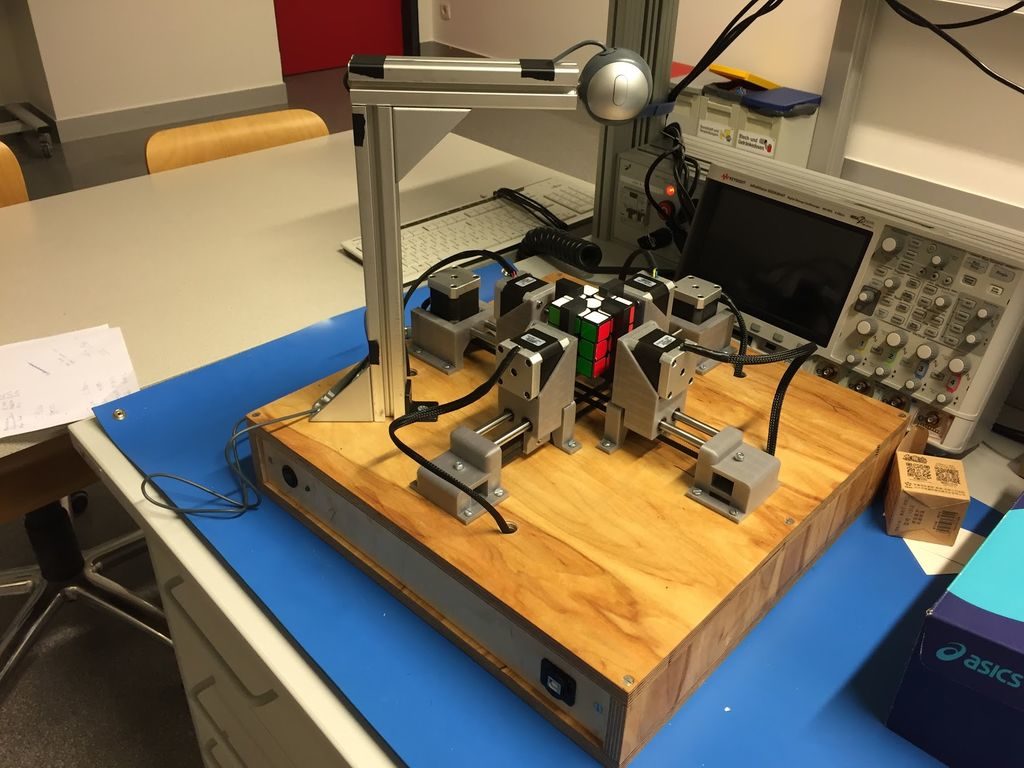Schlagwort: Rubik’s Cube
-

Arduino-controlled robot solves Rubik’s Cubes in a couple seconds
Reading Time: 2 minutesArduino Team — August 1st, 2022 Rubik’s Cubes have been sold in stores for more than 40 years now, but most of us still can’t solve them. Others take the puzzles very seriously, competing in many speed-solving competitions around the world. The world record for the fastest Rubik’s Cube solution is a…
-

Arduino-controlled Rubik’s cube chandelier solves itself
Reading Time: 2 minutesArduino-controlled Rubik’s cube chandelier solves itself Arduino Team — April 25th, 2021 Rubik’s cubes have been mystifying and frustrating people for more than 40 years now. According to Forbes, 450 million Rubik’s cubes had been sold by 2020. But based on our very scientific estimates, only a small fraction of those have…
-

Solving the Rubik’s cube with an Arduino-powered machine
Reading Time: 2 minutesSolving the Rubik’s cube with an Arduino-powered machine Arduino Team — June 6th, 2019 Since its invention in 1974, Rubik’s cubes have been entertaining and frustrating those that choose to take on the challenge of aligning their shapes. More recently, however, people have been building algorithms and machinery to do it for…
-

Q-Bot is an Arduino Mega-driven Rubik’s Cube solver
Reading Time: < 1 minuteQ-Bot is an Arduino Mega-driven Rubik’s Cube solver Arduino Team — March 14th, 2019 Rubik’s Cubes seem to have been most popular in the 1980s, but never really went away. As such, if you have one lying around your house unsolved, why not ‘simply’ construct a machine to do this for…



